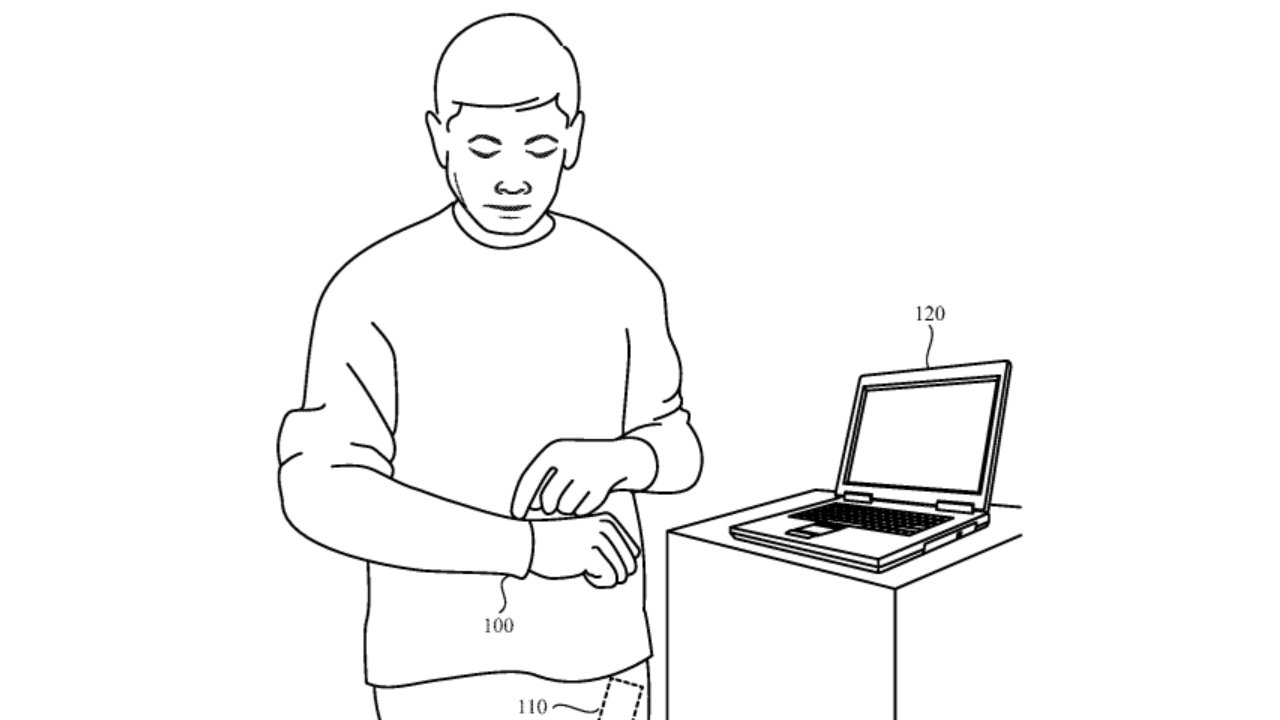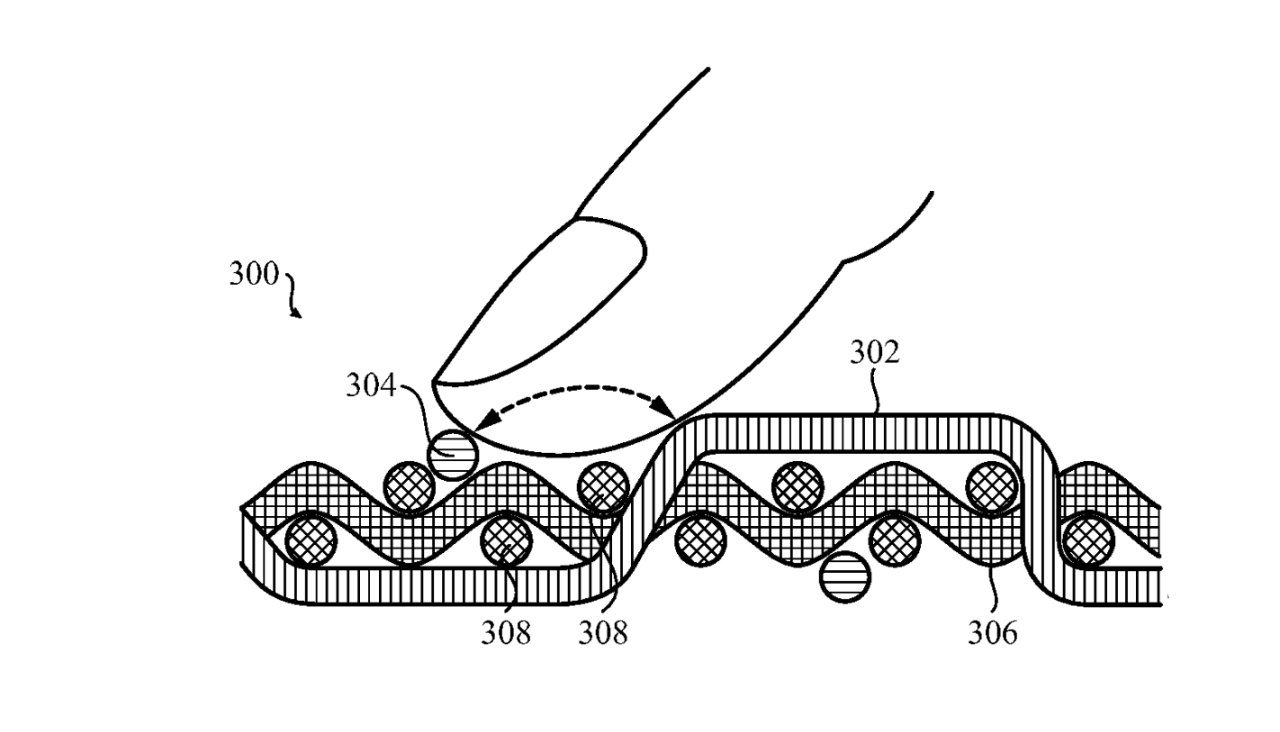Apple researching how to make smart clothes, bags, and furniture
Apple is continuing to investigate ways of making fabric touch sensitive so that it could embed controls or detect gestures on products far beyond Apple Watch bands or iPhone cases.

Detail from the patent showing a man perhaps checking the time -- on his sleeve instead of an Apple Watch
Previously, Apple has researched what it described as a fabric control device, where it was focused on just how to embed any controls into any fabric.
Now a newly-granted patent shows that the firm is pursuing this concept further. "Fabric Sensing Device" is about how to use the controls that get embedded in fabric -- and also why this is all so desirable.
"Traditional electronic devices may include a variety of input devices, including buttons, keys, mice, trackballs, joysticks, and the like," says Apple. "Some traditional electronic devices may include a touch panel or touch screen that is configured to receive a touch input from a user."
"However, many traditional input devices and touch sensors are formed using rigid materials and/or a rigid substrate sheet," it continues, "and, therefore, may be limited to certain form factors."
Apple's attention is on using "touch-sensitive textiles" in order to add controls to "a variety of consumer products." The only use-case example shown patent application's drawings, though, is of a user touching their sleeve -- as if the illustrator has forgotten to draw an Apple Watch band.
It's possible, then, that is exactly as far as Apple is interested in the idea. But perhaps in the same way that all patent applications try to cover every conceivable use of their proposal, Apple's list of devices that could use fabric controls does include more than just the Apple Watch.
"In particular," says Apple, "the devices and techniques described herein may be applied to a variety of textile materials that may be incorporated into consumer electronic products, articles of clothing, clothing accessories, handbags, upholstered items, household textiles, and other items that may include a textile component or element."
So you can bet that if this ever becomes a shipping product, it will be in a new range of Apple Watch bands.
But perhaps a MacBook Pro sleeve could display the laptop's current battery charge and give you a button to shut it down.

Detail from the patent showing one of many ways controls could be embedded within fabric
And it could also be in a seat cover on the Apple Car, or you could stroke the arm of your couch to control an Apple TV 4K.
Or less exotically, HomePods could have controls on the mesh fabric instead of requiring a touch panel at the top. Apple has previously investigated doing that, too.
The patent is credited to three inventors, all of whom were also listed on Apple's previous fabric control patent application.
Read on AppleInsider

Comments
Eventually, solar PV can be layered into clothes, and theoretically, you can trickle charge your phone, earbuds, etc by putting them into your pockets.
The last great visionary alas died many years ago and now Apple is left flailing searching for the next big thing. And trust me it is not AI.
AI is about as revolutionary as large bin liners for your garden rubbish.
There is an ocean of difference between evolutionary and revolutionary.
Again, these patents cover concepts and not specific implementations. They are often a solution in search of a problem, but so were lasing/lasers and transistors when the core concepts were first discovered and patented. We could not live comfortably without lasers today, everything from micro surgery, cutting thick slabs of metal, to laser ranging and distance measurement. Not only do these novel concepts create opportunities for direct product development, they also serve as enablers, motivation, and derivative sources for further research, discovery, and invention. Small discoveries and novel concepts can snowball into much greater importance once the spark of discovery is ignited. Having an open and inquiring mind goes a long way towards seeing value and recognizing potential that others ignore - at their own risk. It's okay to step outside of the box.
I can easily envision smart fabric being used in crash suits, helmets, gloves, footwear, etc., to measure force impact, friction, and heat in very specific areas of a wearer's body. This could go a long way towards directing treatment or therapy to exactly where it will be most beneficial. Even something as simple as properly fitting orthotics and individual conforming helmet padding (for sports and medical applications) would benefit from smart fabric. I'm pretty sure that competitive yacht sailors would be very interested in knowing how their sails are performing across the different regions of the sail area under different rigging configurations in order to maximize their performance for different wind, sea state, and heading conditions.